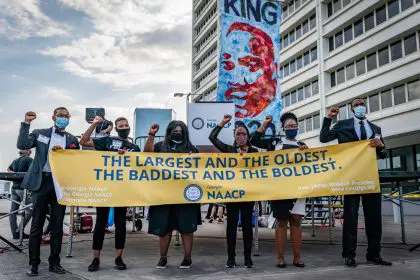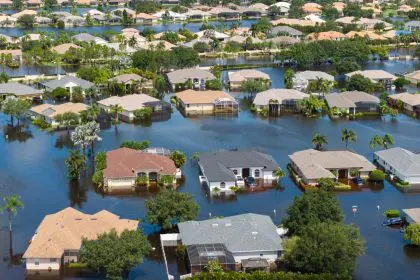As climate disasters become more frequent and severe, the idea of relocating to climate-resilient cities has gained traction. However, the notion of a “climate haven” — a place that is immune to the effects of climate change — may be more of a fantasy than a reality. This article explores the concept of climate havens, the risks associated with them, and the implications for communities across the United States.
What are climate havens?
Initially, cities like Buffalo, New York; Duluth, Michigan; and Asheville, North Carolina, have been touted as potential climate havens. These inland cities are perceived as less vulnerable to hurricanes and extreme weather events, leading to campaigns promoting them as safe refuges for climate migrants.
In 2019, Buffalo’s then-mayor Byron Brown labeled the city a “climate refuge city,” highlighting its freshwater access, moderate climate, and lower likelihood of weather-related disasters. Similarly, Asheville has attracted attention as a destination for those fleeing the impacts of climate change, even ranking third on a list of cities expected to receive climate migrants by June 2024.
The reality of climate disasters
Despite their reputations, these so-called climate havens have not proven to be entirely resilient. In December 2022, Buffalo experienced a devastating blizzard that claimed nearly 50 lives. Asheville, too, faced significant challenges when Hurricane Helene caused extensive flooding and damage to infrastructure. Reports indicate that climate change exacerbated rainfall during this hurricane, leading to more severe impacts.
Moreover, the Great Lakes region, often viewed as a refuge, is not immune to climate-related risks. Increased rainfall has heightened the potential for flooding, putting residents at risk. Between 2010 and 2020, the number of climate disasters costing over $1 billion nearly doubled, underscoring the growing threat posed by extreme weather.
The scope of climate migration
The U.S. Census Bureau estimates that climate-based relocation could affect nearly 100 million people in the United States. With 40% of Americans living in coastal areas, rising sea levels alone could displace up to 13 million people by the end of the century. This raises critical questions about where these individuals can safely relocate.
Experts caution against the escapist fantasy of climate havens. Billy Fleming, director of the McHarg Center at the University of Pennsylvania, argues that the concept of a climate refuge is not merely a geographical phenomenon but rather a social and economic one. This perspective emphasizes the need for comprehensive planning and investment in infrastructure to support potential influxes of climate migrants.
Disparities and economic consequences
Climate migration also highlights significant disparities among communities. Many underserved areas face greater risks from flooding and lack adequate climate protections. As climate change continues to impact the economy, projections suggest that by 2099, 75% of counties — primarily in the South and Midwest — will experience economic losses, while only 25% may benefit.
Even in regions deemed climate-resilient, such as the Midwest, agricultural communities could suffer devastating losses due to flooding and extreme heat. This raises further concerns about the sustainability of these areas as potential havens.
The need for investment
As the reality of climate change sets in, it is crucial to rethink the approach to climate migration. Rather than relying on the idea of climate havens, experts advocate for significant investments in housing and infrastructure to withstand the impacts of climate change. This includes enhancing disaster preparedness and resilience in both urban and rural areas.
Ultimately, the goal should not be to evacuate populations from coastal regions but to create sustainable communities that can adapt to the changing climate. Relying on rumored climate havens may not provide the safety and security many seek in the face of climate change.
The concept of climate havens may offer a glimmer of hope, but the reality is far more complex. As climate disasters continue to escalate, it is essential to address the underlying issues of infrastructure, community resilience and economic disparity. Only through proactive measures can we hope to create a future where all communities are equipped to face the challenges of climate change.
















